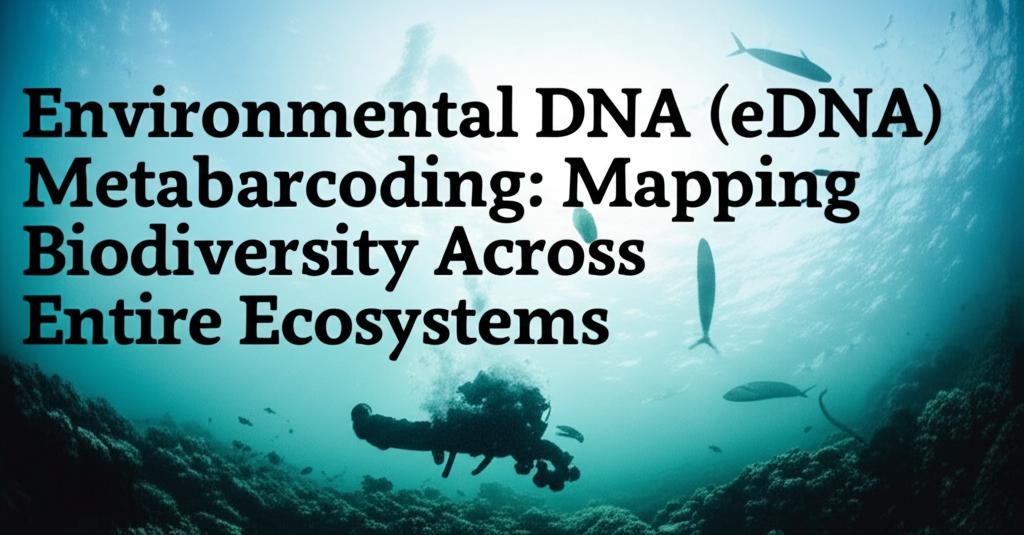Environmental DNA, or eDNA, refers to the genetic material shed by organisms into their environment, such as water, soil, or air. Every organism leaves traces of its DNA behind through skin cells, feces, mucus, gametes, or decaying matter. By collecting these environmental samples and analyzing the DNA within them, scientists can identify the species present in an area without needing to directly capture or observe them.
Metabarcoding is a technique used to identify multiple species from a single environmental sample simultaneously. It works by targeting specific, short DNA regions that vary between species but are consistent within a species – these are known as DNA barcodes. After extracting the total eDNA from a sample (like a liter of pond water or a gram of soil), these barcode regions are amplified using polymerase chain reaction (PCR) with universal primers designed to work across a broad range of target organisms (e.g., fish, insects, plants, or fungi). High-throughput sequencing technologies then read millions of these DNA barcode sequences. By comparing these sequences to vast reference databases containing known species' barcodes, researchers can generate comprehensive lists of the species detected in the sample.
This combination of eDNA sampling and metabarcoding provides a powerful, non-invasive tool for mapping biodiversity across entire ecosystems. Traditional biodiversity surveys often rely on time-consuming and potentially disruptive methods like visual counts, trapping, or acoustic monitoring, which can be limited by observer bias, difficulty in detecting rare or elusive species, and logistical challenges in accessing certain habitats.
eDNA metabarcoding overcomes many of these limitations. It allows for broader spatial and temporal sampling, often at a lower cost and effort compared to traditional methods, especially in aquatic environments where DNA disperses readily. It excels at detecting cryptic, rare, or small-bodied organisms that are easily missed by conventional surveys. This technique enables comprehensive assessments of communities, including bacteria, fungi, protists, invertebrates, and vertebrates, from a single sample, offering a holistic view of ecosystem structure.
Applications are diverse and rapidly expanding. eDNA metabarcoding is used for routine biodiversity monitoring in rivers, lakes, and oceans, assessing the effectiveness of conservation and restoration efforts, detecting invasive species early, analyzing diets by examining gut contents or feces, reconstructing past ecosystems using sediment cores, and assessing soil health through microbial community analysis. It provides baseline data for environmental impact assessments and helps track shifts in species distribution due to climate change or other pressures.
Despite its strengths, challenges remain. The accuracy of species identification depends heavily on the completeness of reference barcode databases. DNA persistence and transport in different environments can affect detection probability and the spatial precision of the data; for instance, DNA might travel downstream in a river, indicating presence away from the organism's immediate location. Factors like PCR inhibitors in the sample, primer biases, and sequencing errors also need careful consideration during data analysis. Ongoing research focuses on standardizing protocols, improving reference libraries, better understanding eDNA dynamics in various environments, and refining bioinformatics pipelines to enhance the accuracy and reliability of eDNA metabarcoding for robust ecosystem-wide biodiversity mapping.

